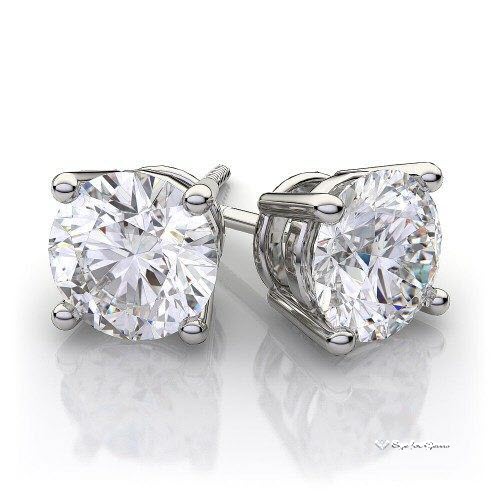
What Are Synthetic Diamonds?
Synthetic diamonds are man-made stones. These stones were first produced in the early 1950’s for mainly industrial purposes. Only recently have synthetic diamonds become available for commercial retail purposes. Synthetic diamonds are produced in a laboratory and they essentially have the same chemical composition and crystal structure of a natural diamond. Their physical and visual properties are almost the same as a natural stone as well. Synthetic diamonds are referred to as “Lab Grown”, “Lab-Created”, “Created”, Moissanite, and “Man-Made”.
Laboratory Grown
Based on GIA the Gemological Institute of America – Laboratory-grown diamonds are increasingly available in greater quantities, higher quality and new colors at price points that many find attractive. It is no wonder then that laboratory-grown diamonds are a growing presence in the marketplace. What are they and how are they different from natural diamonds?
Laboratory-grown diamonds have essentially the same chemical, optical and physical properties and crystal structure as natural diamonds. Like natural diamonds, they are made of tightly-bonded carbon atoms. They respond to light in the same way and are just as hard as natural diamonds. The main differences between laboratory-grown and natural diamonds lie in their origin. Think of it this way: laboratory-grown diamonds are like ice from your refrigerator, while natural diamonds are like ice from a glacier. They are both ice, although their formation stories and the age of each are very different.
There are two main processes used to create laboratory-grown diamonds:
1. High Pressure, High Temperature (HPHT)
With this method, laboratory-grown diamonds are produced using high-pressure, high-temperature conditions similar to what natural diamonds experience in the earth. HPHT diamond growth occurs at pressures of 5–6 GPa (roughly equivalent to the pressure exerted by a commercial jet airplane if balanced on the tip of a person’s finger) and at temperatures of 1300–1600°C.
Lower-quality diamonds, whether natural or laboratory-grown, can also be put through the HPHT process to improve color. In addition to making diamonds more colorless, this process can also be used to change the color of diamonds to pink, blue or yellow. The diamond would then be called a “treated” diamond. This is disclosed in GIA reports.
How are laboratory-grown diamonds identified?
Laboratory-grown diamonds require advanced testing in a gemological laboratory to be identified with certainty. At laboratories like GIA, scientists and graders used sophisticated instruments to analyze diamond strain patterns, trace element composition, inclusions, fluorescence, phosphorescence and more in order to separate laboratory-grown diamonds from natural. These factors are different due to the vastly different formation conditions of laboratory-grown and natural diamonds
Cultured vs Synthetic
Types of Man Made Diamonds
Cubic Zirconia (CZ)
The oldest of simulated Zirconia’s, are widely available. Once considered a fairly decent diamond replica, the commodity-like availability and vast differences in quality have made the stone synonymous with low-cost fashion jewelry. CZ’s are fairly hard, 8-8.5 on the Mohs Scale, but only slightly harder than most semi-precious gemstones. CZ’s do have a tendency to show fluorescence and will cloud over time.
Moissanite
Moissanite, lab diamonds are more affordable than their naturally mined diamond counterparts, you save up 30% or more. Moissanite was discovered in 1893 in Arizona by Nobel Prize winner Dr. Ferdinand Henri Moissan in Diablo Canyon, site of a crater formed by a huge meteorite that struck the earth 40 thousand years ago. Dr. Moissan discovered bits of what looked like tiny diamonds. Moissanite is extremely hard, rating a 9.25 on the Mohs Scale (diamond is 10.0). Its refractive index (brilliance) is slightly higher than diamond and it possesses twice as much fire diamonds. Plus, unlike Cubic Zirconia, Moissanite doesn’t cloud over time. Moissanite is much more expensive than Cubic Zirconia but still less than natural diamonds. This is an excellent choice for a diamond substitute. Charles & Colvard Forever One™, the newest addition to the Charles & Colvard® family. A triumph of art, science, and sustained effort, Forever One™ is an unprecedented achievement with the extreme hardness and robustness inherent in all Charles & Colvard Created Moissanite®. Forever One™ is at the very pinnacle of the gemological scale, in the coveted D-E-F ranges and is a gem so pure, so white, so incredibly brilliant that it promises to change, forever, how fine jewelry is made and enjoyed. Forever One Moissanite® is truly a diamond replacement as it surpasses a diamond in brilliance, fire, toughness, and luster.
